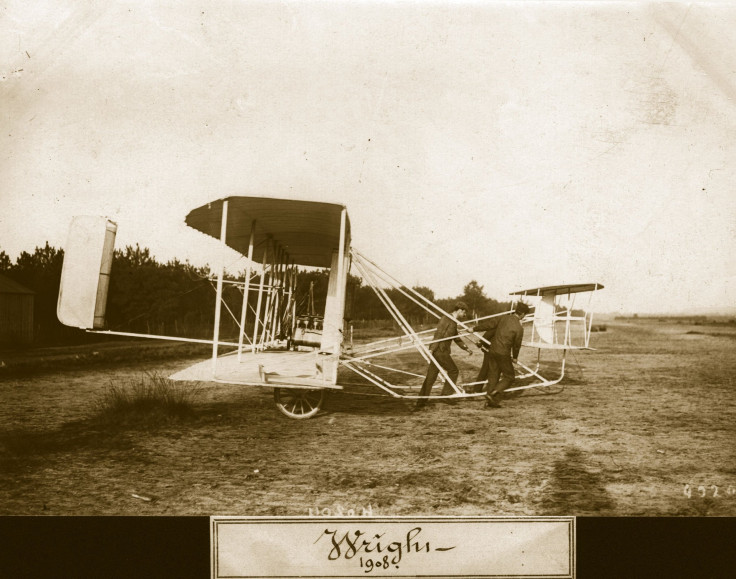What Is Wright Brothers Day? Facts, Quotes Of Aviation Legends

On Dec. 17, 1903, two Ohio brothers made history by conducting the first successful flight in a heavier-than-air, mechanically propelled the craft. Wright Brothers Day in the United States commemorates their important achievement.
Orville and Wilbur were 32 and 36 years old, respectively, when their first flight took off from Kitty Hawk, North Carolina. Despite having no formal knowledge of engineering, their first aircraft reached 120 feet in the air for 12 seconds during its maiden flight.
Here are few interesting facts about the Wright Brothers, who designed the world’s first successful plane with controls that allowed the pilot to steer it.
- None of the brothers completed their formal education. Wilbur was able to complete only four years of high school before his family moved to Dayton, Ohio. Orville, on the other hand, dropped out of high school before his senior year to start a printing business.
- Their father made them promise never to fly together since he did not want to lose both of them. The only exception occurred on May 25, 1910, when both the brothers accompanied their father in the first and only flight of his lifetime.
- To decide who is going to fly first, the brothers tossed a coin and Wilbur won. Although he took the first attempt to fly on May 14, 1903, his effort was not successful. The next attempt was made by Orville on Dec. 17, which was successful, making him the first Wright brother to fly the aircraft.
- Orville was in an airplane accident in 1908, which left him badly hurt with a back injury that plagued him for the rest of his life.
- Neither of the brothers got married.
The following are a few quotes by the Orville Wright from the Brainy Quote:
- “The airplane stays up because it doesn't have the time to fall.”
- “If we all worked on the assumption that what is accepted as true is really true, there would be little hope of advance.”
- “One of the Life Saving men snapped the camera for us, taking a picture just as the machine had reached the end of the track and had risen to a height of about two feet.”
- “A sudden dart when a little over a hundred feet from the end of the track, or a little over 120 feet from the point at which it rose into the air, ended the flight.”
- “We estimated that we could make one of four cylinders with 4 inch bore and 4 inch stroke, weighing not over two hundred pounds, including all accessories.”
- “With all the knowledge and skill acquired in thousands of flights in the last ten years, I would hardly think today of making my first flight on a strange machine in a twenty-seven mile wind, even if I knew that the machine had already been flown and was safe.”
- “The course of the flight up and down was exceedingly erratic, partly due to the irregularity of the air, and partly to lack of experience in handling this machine. The control of the front rudder was difficult on account of its being balanced too near the center.”
- “We laid the track on a smooth stretch of ground about one hundred feet north of the new building.”
© Copyright IBTimes 2024. All rights reserved.












